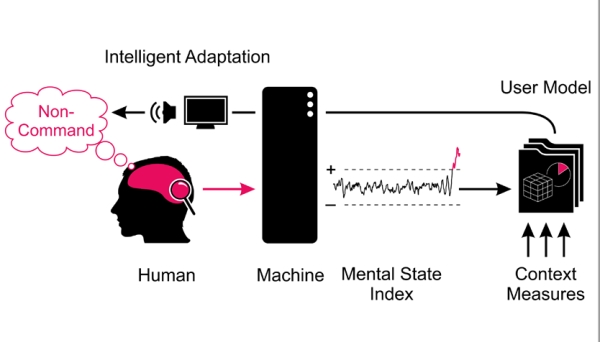Prof. Margarete Jahrmann, PI Neuromatic
Game Art & the Neuromatic Research Group. In the context of the artistic research project */Neuromatic Game Art: Critical
play with neurointerfaces/*
supported by Austrian Research fund FWF/PEEK, lead University
of Applied Arts Vienna in cooperation with national and international research partners, Philosophy of Media and Technology,
University Vienna, Game Design/ Serious Game Research, Zurich University of the Arts and Computational Neuroscience, BTU Cottbus-Senftenberg/
LMU Munich
After registration You will receive a confirmation via E-Mail with information for the meeting.
Dr. Thorsten O. Zander
Brandenburg Technical University (BTU), Germany
/ Zander Laboratories, Amsterdam, The Netherlands
In my talk I will provide an overview of recent
developments how Brain-Computer Interfaces (BCI) can be applied in Human-Machine Systems, specifically for users without disabilities.
Next to direct control paradigms – which might find application in specific use cases – Passive BCIs (pBCIs, [1]) have proven
to be a powerful tool to provide information to technical systems without the need for any additional attention or effort
by the user.
Passive Brain‐Computer Interfaces can assess information about changes in cognitive and affective state
in real time and convey an interpretation of these states as implicit commands [2] to a
machine. The machine can
then automatically adapt its own state to support a given task in the Human‐Machine System [3]. Furthermore, by collating
information about the user state with the task‐specific context and using methods from machine learning and artificial intelligence
a user model can be generated that even reflects correlates of higher cognition [4]. The resulting Neuroadaptive Technology
leads to a convergence of human and machine intelligence and enables a fundamentally new way of interaction with technology
[4, 5, 6].
I will give brief examples for each of the above‐mentioned technical approaches and discuss the hurdles
that need to be taken to bring Neuroadaptive Technologies into our daily lives.
References:
[1]
Zander, T. O., & Kothe, C. (2011). Towards passive brain–computer interfaces: applying brain–computer
interface
technology to human–machine systems in general. Journal of neural engineering, 8(2), 025005.
[2] Zander, T. O.,
Brönstrup, J., Lorenz, R., & Krol, L. R. (2014). Towards BCI-based implicit control in human–
computer interaction.
In Advances in Physiological Computing (pp. 67-90). Springer, London.
[3] Zander, T. O., Kothe, C., Jatzev, S.,
& Gaertner, M. (2010). Enhancing human-computer interaction with input
from active and passive brain-computer
interfaces. In Brain-computer interfaces (pp. 181-199). Springer, London.
[4] Zander, T. O., Krol, L. R., Birbaumer,
N. P., & Gramann, K. (2016). Neuroadaptive technology enables implicit
cursor control based on medial prefrontal
cortex activity. Proceedings of the National Academy of
Sciences, 113(52), 14898-14903.
[5] Lorenz, R.,
Monti, R. P., Violante, I. R., Anagnostopoulos, C., Faisal, A. A., Montana, G., & Leech, R. (2016).
The automatic
neuroscientist: a framework for optimizing experimental design with closed-loop real-time
fMRI. NeuroImage, 129,
320-334.
[6] Iturrate, I., Chavarriaga, R., Montesano, L., Minguez, J., & Millán, J. D. R. (2015). Teaching
brain-machine
interfaces as an alternative paradigm to neuroprosthetics control. Scientific reports, 5, 13893.




